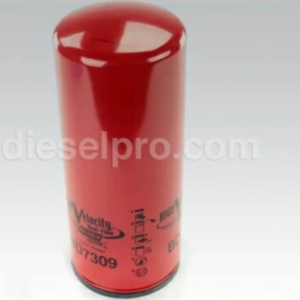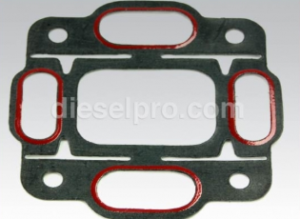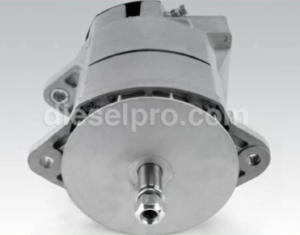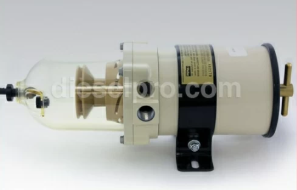
Introduction
The Cummins KTA38 and KTA50 engines are built for heavy-duty applications, delivering exceptional power, efficiency, and durability. However, to maintain peak performance and extend their lifespan, daily maintenance operations are crucial.
Neglecting daily maintenance can lead to premature wear, decreased fuel efficiency, and costly downtime. This guide provides a detailed breakdown of essential daily maintenance procedures to ensure your Cummins KTA38 and KTA50 engines run smoothly and efficiently.
Parts Catalog for KTA38 Cummins Marine and Industrial Engines
Parts Catalog for KTA50 Cummins Marine and Industrial Engines

Daily Maintenance Operations for Cummins KTA38 and KTA50
Daily maintenance tasks serve as preventative measures to detect minor issues before they become costly repairs. A consistent routine helps keep the engine in optimal condition, enhances efficiency, and reduces the risk of unexpected failures.
This section covers a step-by-step daily maintenance checklist, including detailed explanations of why each step is necessary and how to perform each check correctly.
Daily Checklist for Cummins KTA38 and KTA50
1. Check Oil Levels and Top Off with the Recommended SAE-Grade Oil

Why It’s Important:
Engine oil lubricates critical components, reducing friction, preventing overheating, and minimizing wear. Running with low or degraded oil increases the risk of excessive engine wear, overheating, and mechanical failures.
How to Perform the Check:
- Ensure the engine is cool and parked on level ground.
- Locate the dipstick (usually marked with an oil symbol).
- Remove the dipstick, wipe it clean with a lint-free cloth, and reinsert it fully.
- Pull out the dipstick again and check the oil level against the minimum and maximum marks.
- If low, add Cummins-approved SAE-grade engine oil as per manufacturer specifications.
- Reinsert the dipstick and confirm the oil level is within the recommended range.
- Inspect for oil leaks around seals and gaskets.
Recommended Oil Type:
- Use 15W-40 API CI-4 or CK-4 oil for most applications.
- For extreme cold conditions, 10W-30 may be used.
2. Inspect Coolant Levels and Maintain Proper Concentration

Why It’s Important:
The cooling system regulates engine temperature, preventing overheating and reducing wear on engine components. Low coolant levels or improper coolant concentration can cause engine overheating, cavitation, and component failure.
How to Perform the Check:
- Ensure the engine is cool before opening the coolant reservoir or radiator cap.
- Check the coolant level in the expansion tank or radiator.
- If low, add Cummins-approved coolant (typically 50/50 coolant-water mix).
- Inspect for coolant leaks around hoses, the radiator, and connections.
Additional Tips:
- Always use extended-life coolant (ELC) to prevent corrosion.
- Never mix different types of coolant.
3. Look for Leaks in Fuel, Coolant, and Oil Systems

Why It’s Important:
Leaks in any system can lead to performance issues, increased operational costs, and potential engine failure. Catching leaks early prevents major breakdowns.
How to Perform the Check:
- Visually inspect the engine block, fuel lines, and coolant hoses for drips or wet spots.
- Check underneath the engine for puddles of oil, fuel, or coolant.
- Use a clean rag to wipe suspected areas and see if new leaks appear.
- Inspect gaskets, fittings, and connections for any loose fasteners or cracks.
Common Leak Points:
- Fuel Lines: Loose fittings or worn-out injectors.
- Oil System: Valve cover gaskets, turbo seals, or drain plug.
- Coolant System: Radiator hoses, water pump seals, or thermostat housing.
4. Inspect the Air Intake System and Clean Air Filters If Necessary

Why It’s Important:
The air intake system ensures a clean and sufficient air supply for combustion. Dirty or clogged air filters can reduce engine efficiency, increase fuel consumption, and lead to poor performance.
How to Perform the Check:
- Locate the air filter housing and visually inspect the filter for dirt buildup.
- If the filter appears clogged or excessively dirty, replace it with a Cummins-approved filter.
- Inspect the intake piping and clamps for loose fittings or obstructions.
- Ensure the turbocharger intake is clean and free from debris.
Additional Tips:
- In dusty environments, air filters may need to be replaced more frequently.
- A damaged air filter can lead to excessive wear on pistons and cylinders.
5. Check Belts and Pulleys for Wear or Misalignment

Why It’s Important:
Belts drive essential components such as the alternator, water pump, and fan. A loose, cracked, or misaligned belt can cause power loss, overheating, and electrical failures.
How to Perform the Check:
- Inspect all belts for cracks, fraying, or glazing.
- Check for proper belt tension by pressing on the belt—there should be minimal slack.
- Ensure pulleys are aligned and free of damage.
- If a belt is loose or damaged, adjust or replace it immediately.
Common Issues & Fixes:
- Squealing Noise: Indicates a loose or worn-out belt—tighten or replace it.
- Visible Cracks: Replace the belt to prevent failure.
- Belt Slippage: Check for proper alignment and tension.
6. Drain Water Separators to Remove Moisture from the Fuel System

Why It’s Important:
Water contamination in the fuel system can lead to injector damage, poor combustion, and engine misfires. Diesel fuel naturally absorbs moisture, making regular draining essential.
How to Perform the Check:
- Locate the fuel/water separator (typically near the fuel filter).
- Place a container under the separator’s drain valve.
- Open the valve and drain until clean fuel appears.
- Close the valve tightly to prevent air leaks.
- Dispose of contaminated fuel properly.
Additional Tips:
- If excessive water is found, check fuel storage tanks for condensation issues.
- Use fuel additives to prevent moisture buildup in cold climates.
7. Monitor Dashboard Indicators for Abnormal Readings

Why It’s Important:
Dashboard gauges and warning lights provide real-time information about engine health. Ignoring abnormal readings can result in major mechanical failures.
Key Indicators to Monitor:
| Gauge/Indicator | Normal Range | Warning Signs |
| Oil Pressure | 40-60 PSI | Sudden drop may indicate a leak or pump failure. |
| Coolant Temperature | 180-200°F | Overheating suggests cooling system issues. |
| Battery Voltage | 24-28V (for 24V system) | Low voltage may indicate alternator failure. |
| Fuel Pressure | 25-45 PSI | A sudden drop may mean a clogged fuel filter. |
How to Respond to Abnormal Readings:
- Low Oil Pressure → Shut down the engine and check oil levels.
- High Coolant Temperature → Stop operation and inspect the cooling system.
- Low Fuel Pressure → Check for clogged fuel filters or leaks.
Conclusion
Daily maintenance of the Cummins KTA38 and KTA50 is essential for ensuring long-term durability, peak performance, and fuel efficiency. By following this comprehensive daily checklist, operators can detect potential issues early, reduce repair costs, and maximize uptime.
Key Takeaways:
✔ Always check oil and coolant levels before starting the engine.
✔ Regularly inspect for leaks in fuel, coolant, and oil systems.
✔ Keep air filters clean to ensure optimal engine performance.
✔ Monitor dashboard indicators to detect abnormalities early.
For high-quality aftermarket parts and Cummins engine support, visit Diesel Pro Power for reliable components that keep your engine running at its best.
Parts Catalog for KTA38 Cummins Marine and Industrial Engines
Parts Catalog for KTA50 Cummins Marine and Industrial Engines



 Free US Calls: 1-888-433-4735
Free US Calls: 1-888-433-4735 International: 305-545-5588
International: 305-545-5588